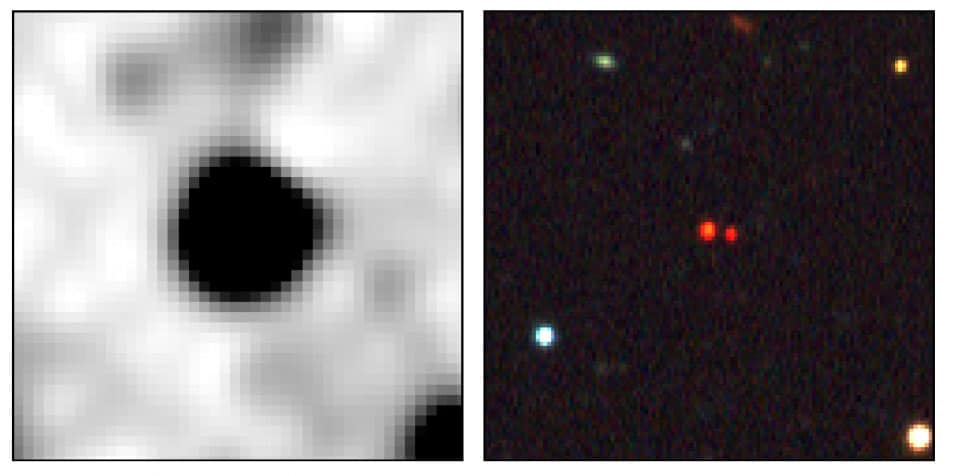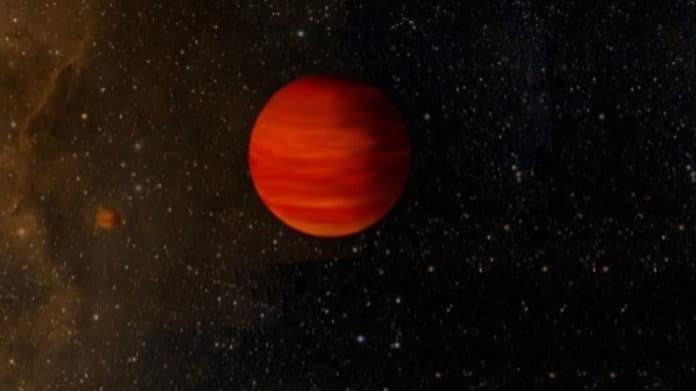Brown dwarfs are hydrogen-rich objects that are unable to sustain core fusion reactions. They have less mass than a star but more than the planet. As they age, brown dwarfs cool, reducing their radius and luminosity.
Just like stars, brown dwarfs often wander alone through space but can also be seen in binary systems. Such brown dwarf binaries are much rarer. Brown dwarf–brown dwarf pairs are typically difficult to resolve because they often have very small separations.
The gravitational force between the brown dwarf pair is lower than for a pair of stars with the same separation. That’s the reason they are more likely to break up over time, making this pair of brown dwarfs an exceptional find.
Using brown dwarfs discovered with data from the Wide-field Infrared Survey Explorer (WISE) via the Backyard Worlds: Planet 9 citizen science project, a team of astronomers has found a rare pair of brown dwarfs with the widest separation of any brown dwarf binary system found to date.
Astronomers used Keck Observatory‘s Near-Infrared Echellette Spectrometer, or NIRES instrument, to obtain infrared spectra of the brown dwarf binary system, called CWISE J014611.20-050850.0AB.
These brown dwarfs are about 12 billion miles apart, making it the widest-separation brown dwarf pair found to date.
Co-author Adam Burgasser said, “Keck’s exceptional sensitivity in the infrared with this instrument was critical for our measurements. The secondary brown dwarf of this system is exceptionally faint. Still, with Keck, we were able to obtain good enough spectral data to classify both sources and identify them as members of a rare class of blue L dwarfs.”
Co-author Adam Schneider of the U.S. Naval Observatory, Flagstaff Station, and George Mason University said, “Wide, low-mass systems like CWISE J014611.20-050850.0AB are usually disrupted early on in their lifetimes, so the fact that this one has survived until now is pretty remarkable.”
For this study, astronomers look into the images of Backyard Worlds discoveries. They thought that the companion brown dwarfs might have been overlooked in these images. While doing so, they discovered the rare CWISE J014611.20 050850.0AB brown dwarf binary system.
They peered through about 3,000 brown dwarfs images from Backyard Worlds. They then compared the WISE images to other survey images, looking for evidence of a brown dwarf companion to the original target.

Using follow-up near-infrared spectroscopy with Keck/NIRES, the astronomers determined component spectral types of L4 and L8 (blue), making CWISE J0146−0508AB one of only a few benchmark systems with a blue L dwarf. At an estimated distance of about 40 parsecs, or 130.4 light-years from Earth, the CWISE J0146−0508AB has a projected separation of 129 astronomical units or 129 times the distance between the Sun and the Earth.
According to astronomers, the discovery allows the study of brown dwarf binary systems and the development of models and procedures that will help recognize more of them in the future.
Co-author Jennifer Patience, Softich’s adviser at ASU, said, “Binary systems are used to calibrate many relations in astronomy, and this newly discovered pair of brown dwarfs will present an important test of brown dwarf formation and evolution models.”
Journal Reference:
- Emma Softich, Adam C. Schneider, Jennifer Patience1, Adam J. Burgasser, Evgenya Shkolnik, Jacqueline K. Faherty, Dan Caselden, Aaron M. Meisner, J. Davy Kirkpatrick, Marc J. Kuchner, Jonathan Gagné, Daniella Bardalez Gagliuffi, Michael C. Cushing, Sarah L. Casewell, Christian Aganze, Chih-Chun Hsu, Nikolaj Stevnbak Andersen, Frank Kiwi, Melina Thévenot, and The Backyard Worlds: Planet 9 Collaboration. DOI: 10.3847/2041-8213/ac51d8
